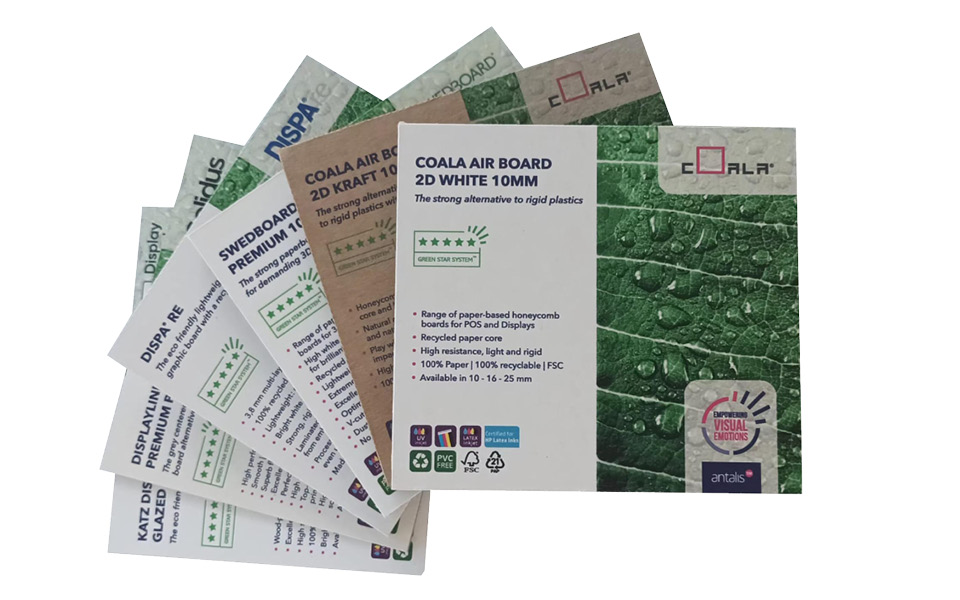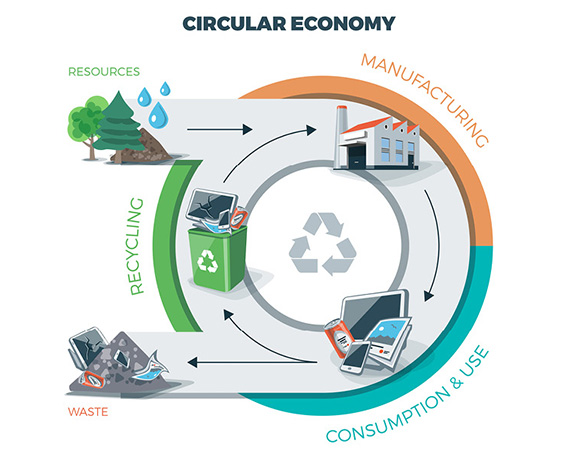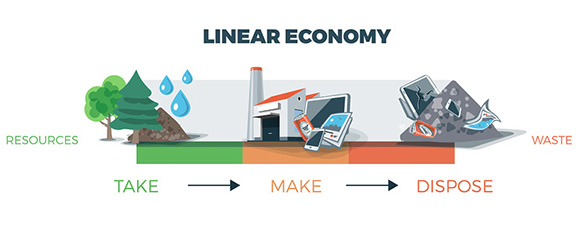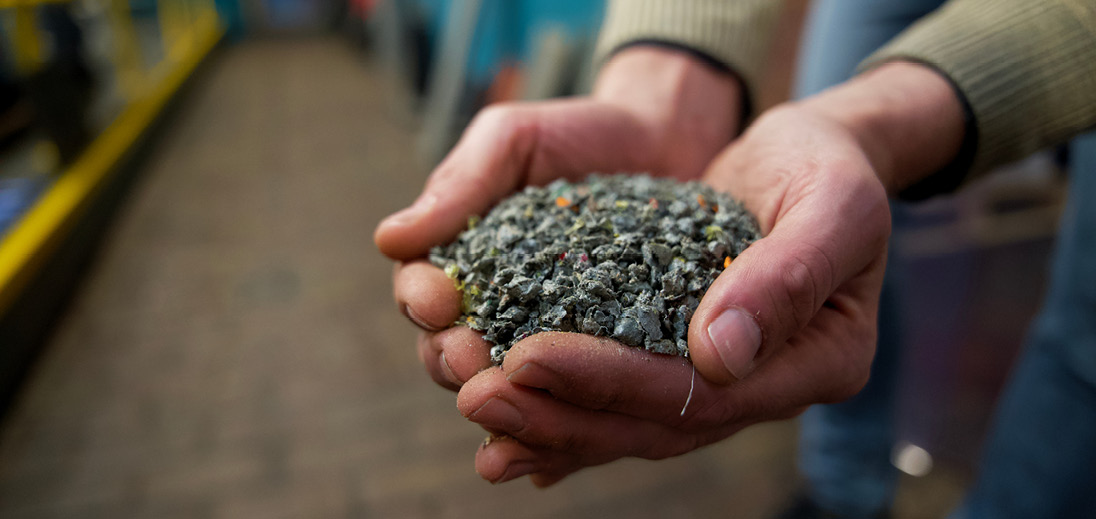How to reduce the use of PVC for more eco-responsible retail spaces
PVC is everywhere around, including in retail signage and displays. Our collective challenge is to enhance PVC’s end-of-life while adopting more sustainable alternatives for retail Visual Communication.
PVC is everywhere around, including in retail signage and displays. Our collective challenge is to enhance PVC’s end-of-life while adopting more sustainable alternatives for retail Visual Communication.
Why PVC is so widely used
First, let’s de-demonise using PVC. Polyvinyl Chloride is a versatile plastic widely spread in our world, thanks to its formidable features. We can alter its properties by using additives and manufacturing processes, resulting in many forms of PVC products to suit different needs, including:
- PVC banners for advertising banners,
- PVC foam for signage and displays,
- Self-adhesive PVC for labels and stickers,
- PVC films and sheets for many purposes,
- PVC clothing for clothes, shoes, and accessories,
- PVC tubing for medical, laboratory, and chemical applications.
Each form of PVC serves different indoor and outdoor purposes, covering various applications. Easy to adapt, PVC has been a material of choice for decades in numerous industries.
However, PVC has cons, especially around its end-of-life and the pollution issues it generates. That’s why we must rethink our actual needs for PVC production and usage.

The best sustainable alternatives to PVC
Do we need the performance of PVC in everything we do? Absolutely not. There are multiple alternatives to PVC boards that are light, rigid enough, and easy to print on. For instance, fibre-based materials are perfect for indoor display. Honeycomb allow 3D designs and polypropylene display boards check outdoor requirements.
For hanging displays, small signages, and simple displays
Wood pulp boards like Katz Display Boards stay flat and stable, which makes them perfect for point-of-sale advertising. For more rigid displays, check out silk-screened cardboards like the Excellent Silkboard. If you're looking for lighter boards, Dispa display panels offer many options according to your application. All these displays come from certified sources and are easy to recycle in the paper waste stream.
For complex 3D displays
Honeycomb board is the best fit for resistant boards. Collections like Coala Air Board and Swedboard are ideal for eco-responsible design. Both lightweight and robust, they allow unlimited creativity to design quality displays and furniture for indoor applications. That's a perfect opportunity to design strongly-branded experiences.

For humid areas indoors or outdoors
Do you want to use Visual Communication outside of your retail space? Solutions also exist for short‑term outdoor applications. Consider wood-pulp boards like Katz Display Board Outdoor or three-layer paper panels like Dispa Outdoor.
For prolonged outdoor applications
What if you plan to use an outdoor sign or display for a longer time? Fluted Polypropylene is your best ally with boards like Triaprint or AkyPrint. These cell-structured polypropylene materials are lighter than PVC and 100% recyclable. Their smooth surface is ideal for printing.
Solutions to the PVC end-of-life management
PVC production involves energy-intensive processes and carbon emissions because of chemicals like chlorine gas, additives, and other toxic substances.
But the biggest concern revolves around PVC end-of-life management. Flexible PVC is the least recyclable and most widely used plastic. Indeed, it is challenging to recycle and often ends up in landfills or incinerators, where it can release harmful substances like dioxins and phosgene. PVC never disappears, becoming microplastic particles.
Managing the end-of-life of printed graphics is a complex problem involving multiple stakeholders, including material manufacturers, suppliers, agencies, brands, and recycling partners.


Recycling these banners requires separating PVC from polyester, which makes recycling complex and costly. Fortunately, new solutions are emerging. A 2018 Australian study explains a cost-effective and sustainable method that doesn't require separating PVC from polyester. Instead, it shreds banners with recycled cable material, enhancing the mix density and making it suitable for plastic manufacturing techniques.
Australia alone landfills 500 tons of PVC-coated banners each year. This approach could prevent up to 50% of PVC-coated banner waste from going to landfill, emitting 78% less kg CO2 equivalent.
Conclusion: the solution is not one-sided
Today, the sign and graphics industry mainly relies on plastics like self-adhesive films, banners, and rigid sheets, contributing to long-term environmental waste. The industry's reliance on PVC stems from habit and convenience.

As retailers or manufacturers, we have to initiate better solutions for sustainable retail without waiting for new legislative constraints.
Tackling this big challenge requires small, incremental changes in material choices. To create more eco-responsible retail spaces, we also need to think about circularity to enhance the value of everything we produce. For example, we can reuse printed materials for clothing. Or we can repurpose unprinted fabrics for artistic purposes.
While environmental concerns are paramount, we want to keep commercial viability in mind. It means crafting performance and cost-effective alternatives. There is no perfect solution. However, there are ways we can improve things.







